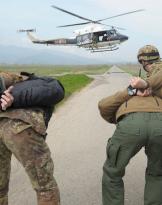Sharing your photos on the internet and making them public on the main social media has become not only a tool to preserve your memories but also a habit, a quick and easy way to make known what you do. In Italy there are many online pages and the use of social media to achieve notoriety is widespread.
Thanks to the new tools, finding new friends and new customers on the internet is very easy, so much so that social networks have become the most used to enhance social interactions. But, you know, every coin has its downside and this also applies to the use of the network, in particular in sharing your documents, photos and videos.
In cyberspace, it is very easy to steal data and then use it as you please, but all of this is illegal. Strict regulations are therefore needed to protect network data and, to meet this need, we must keep in mind that when you take a photo, the copyright on that shot automatically arises. It means that particular actions are necessary to copy the authorship of the work.
Use the data without authorization, constitutes illegal, that is a violation of the right to the image and copyright. The right to copyright never like now, is experiencing, in fact, difficult times. Hence some basic and practical rules to protect personal data on the network.
In practical terms, the most used method in protecting your photos and videos is to use the so-called company, or introduce an invisible watermark in the photo in this way: do not modify the content of the image, but displaying it through specific software, such as Watermark, paternity becomes clear. This type of intervention can be done with Photoshop, or even simpler programs like, Picture Shark or directly use online services like Watermarktool o Digimark.
But the best method is always to disable the right button on the site where the images are loaded. To do this, just insert anywhere in the owned site a code called "HTML" that can be found on sites such as: http://www.html.it/faq/come-disabilitare-il-tasto-destro-del-mouse/ .
Another method is the cd theoretical method, often used in cases of particular urgency, and consists in advising the competent authorities, in our case the Postal Police.
In doing so, the right to preserve one's own is used privacy and in the case of photo or video theft the art. 15 of the code provides (D.lg.196 / 2003), compensation for damages. All this was also confirmed by the Court of Cassation as the 16133 ruling of 15 July 2014, which placed the limit of the so-called "common sense" and the duty to compensation for the damage of the perpetrator.
In urgent cases it is necessary to have recourse directly to the Privacy Guarantor, or to appeal directly to the ordinary judiciary or the Court of Justice of the European Union. However, justice is still too slow compared to the phenomenon of illicit web, and the case of Tiziana Cantone is the example that the acceptance of the appeal comes in a non-timely manner. There are many appeals in Italy on the right to be forgotten, or the non-publication of news, images, videos deemed "inadequate and no longer relevant" for the purposes of the news and the ruling of the European Court of Justice 13 May 2014 specifies it.
However, before resorting to various tools it is absolutely necessary to cultivate a mature culture in the use of the network and a prudent dissemination of its data in the network.
(photo: Ryan McGuire)












